Cross-sectional survey of prevalence and personality characteristics of college students with internet addiction in Wenzhou, China
2012-07-08DeguoJIANGShengZHUMinjieYEChongguangLIN
Deguo JIANG, Sheng ZHU, Minjie YE*, Chongguang LIN
Cross-sectional survey of prevalence and personality characteristics of college students with internet addiction in Wenzhou, China
Deguo JIANG1, Sheng ZHU2, Minjie YE1*, Chongguang LIN1
Background:Internet addiction can seriously affect the social functioning and studies of college students in China but measures for addressing this problem have not yet been developed or tested.
Objective:Assess the personality characteristics of college students with internet addiction.
Methods:Two self-report scales, the Tridimensional Personality Questionnaire (TPQ) and the Chen Internet Addiction Scale (CIAS), were administered to a stratified random sample of 697 college students from colleges and vocational schools in Wenzhou, China. The characteristics of 48 subjects who meet Chen’s criteria for internet addiction (score of 64 or greater out of 100 on the CIAS) were compared to those of 649 subjects who did not meet criteria for internet addiction.
Results:The prevalence of internet addiction in the sample was 6.9% (95% CI=5.1-9.1%). Compared to students without internet addiction, those with internet addiction were more likely to be male, of Han ethnicity, to have a history of substance use (primarily tobacco and alcohol), and to be a student at a technical college. Students with internet addiction had higher mean (sd) scores on the novelty-seeking subscale of the TPQ [17.9 (1.2) v. 13.0 (1.6), t=16.75 p<0.001] and on the harm-avoidance subscale [17.2 (1.9) v. 14.6 (1.1), t=15.14, p<0.001] but lower scores on the reward-dependence subscale [14.6 (1.4) v. 18.3 (1.7), t=-7.64, p<0.001]. Logistic regression found that the most important independent predictors of internet addiction were Han ethnicity (OR= 5.52, 95% CI=2.00-15.32), male gender (4.40, 1.97-9.81), and substance use (1.08, 1.02-1.15). After adjustment for other variables personality measures were not significantly associated with internet addiction.
Conclusion:The prevalence of internet addiction among college students in Wenzhou is similar to that in other parts of China. Significant differences in the personality characteristics assessed by the TPQ between university students with and without internet addiction become non-significant after controlling for gender, ethnicity and substance use patterns.
1. Introduction
It is widely acknowledged that excessive internet use can be detrimental to learning, interpersonal relationships, economic status and occupational functioning. As the internet becomes increasingly accessible to the Chinese population, there is a growing concern about addiction to the internet. Reports of the prevalence of internet addiction among university students in China vary from 4.5 to 15.0%.[1-3]
Identification of personality traits that have been associated with ‘addictive personality’ —impulsiveness, novelty seeking, harm avoidance, psychoticism and social deviation—may be useful in the early identification and prevention of internet addiction.[4]Several different personality measures, including the Eysenck Personality Questionnaire and the Minnesota Multiphasic Personality Inventory, have been employed to assess the personality of college students with internet addiction in China.[5-7]One study in Taiwan[8]found that the Tridimensional Personality Questionnaire (TPQ) was able to predict internet addiction and alcohol abuse in adolescents. On the mainland the TPQ has been used in families with members who are alcohol dependent[9]but it has not, as yet, been used in the assessment of internet addiction.
The current study compares personality characteristics of university students in Wenzhou City with and without internet addiction using the TPQ.
2. Methods
2.1 Sample
Wenzhou is a relatively prosperous municipality with 9 million residents in Zhejiang Province on China’s eastern seaboard. There are ten universities and colleges in the city that had a total of 70 230 undergraduate students in 2008. As shown in Figure 1, three universities or colleges of each type (key university, regular university, and technical college) were selected and then subjects were randomly selected from all undergraduates enrolled at each of these schools during November 2008 to January 2009. The questionnaires were administered by trained researchers in a classroom setting with about 40 students at each session. After describing the purpose of the study, the students were told that the questionnaire was anonymous, that their participation was voluntary and that they could withdraw at any time. The students were then asked to complete two self-completion instruments and a basic demographic questionnaire. On average it took students 35 minutes to complete the two instruments.
The study was approved by the Ethics Committee of the Wenzhou Min Kang Hospital.
2.2 The Tridimensional Personality Questionnaire
The Tridimensional Personality Questionnaire (TPQ) developed by Cloninger is based on his biosocial theory of personality. According to Cloninger, there are three independent dimensions of personality associated with different neurotransmitter systems: novelty-seeking (NS) (dopamine), harm-avoidance (HA) (5-hydroxytryptamine), and reward dependence (RD) (noradrenaline).[10-12]This tridimensional theory of personality describes personality characteristics at the psychological and behavioral levels, identifies different neurotransmitter systems for each personality type, and posits that the three dimensions are associated with different susceptibility genes. The tridimensional personality model can be used to assess the correlation between behavioral traits and environmental stimuli so it may be useful in the prediction of addictive behavior.
The TPQ is commonly used in studies about the personality characteristics of different populations. The Chinese translation of the questionnaire used in the current study has been shown to have good reliability and validity.[13,14]The questionnaire includes 100 trueor-false questions, which assess the three dimensions of personality (NS, HA, and RD). The component factors in each of the three dimensions and the internal consistency measures (i.e., alpha values) of the factors are shown in Table 1.
2.3 The Chen Internet Addiction Scale
The Chen Internet Addiction Scale (CIAS) developed by Chen and colleagues in Taiwan[16]assesses the core features of internet addiction. The 26 items in the scale (scored on a four-point Likert scale) are divided into five dimensions: compulsive use, withdrawal, tolerance,time-management problems, and interpersonal and health problems. The total score represents the severity of inappropriate internet use, with higher scores representing a more severe condition. As assessed in Taiwan,[16]the internal consistency of the total scale is excellent (alpha=0.93) and the two-week test-retest reliability is good (ICC=0.83). A study on the mainland with 933 subjects[17]also reported good internal consistency (alpha=0.94). As assessed in the current study the internal consistency (alpha) of the total CIAS score was 0.92 and internal consistency of the five dimension scores ranged from 0.75 to 0.87.
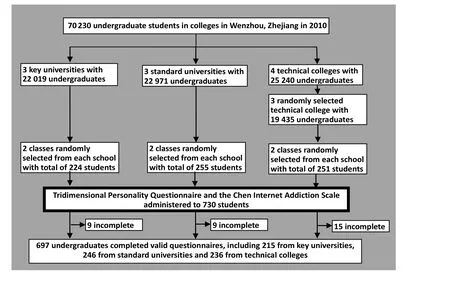
Figure 1. Flowchart for the study
The diagnosis of ‘internet addiction’ employed in this study is that suggested by Chen.[16]Individuals who scored 64 or higher (out of 100) on the CIAS were considered suffering from internet addiction. This criteria for identifying persons with internet addiction has been employed in several other studies in Taiwan[17]and mainland China.[18]
2.4. Statistical analysis
All data were double-entered using Epidata 3.0 and analyzed using SPSS 15.0 software. Comparison of the demographic and personality characteristics of subjects with and without internet addiction used Chi-squared tests and t-tests. The relationship of personality and scores on the internet use scale was assessed using Pearson correlation coefficients. And the independent factors associated with the severity of internet use and the factors that predicted internet addiction were assessed using linear and logistic regression models. There were no significant interaction effects between the variables included in the multiple regression and logistic regression analyses.
3. Results
730 students were selected and 697 (94.7%) validly completed the questionnaires, including 382 (54.8%) males and 315 (45.2%) females. The mean (sd) age of respondents was 19.9 (2.3) years and the range in ages was from 15 to 25. Among the respondents 623 (89.4%) were of Han ethnicity, 37 (5.3%) She ethnicity, 22 (3.1%) Hui ethnicity and 15 (2.1%) other ethnic groups.
3.1 Prevalence of Internet addiction among college students
The mean (sd) total CIAS score was 50.44 (11.08), the median was 50, the interquartile range was 42.0-57.5 and the full range was 30-94. Based on Chen’s criteria for internet addiction (64 or higher total score in the CIAS); the prevalence of internet addiction in this sample was 6.9% (48/697)(95% CI=5.08-9.13%). Of these 48 individuals, 39 were males and 9 were females; they had a mean (sd) age of 18.7 (1.3) years, and all of them were of Han ethnicity. As shown in Table 2, compared to the 649 students who did not meet the internet addiction criteria, the 48 students with internet addiction were younger, more likely to be male, more likely to be of Han ethnicity, more likely to have used substances, and more likely to be students at technical colleges.
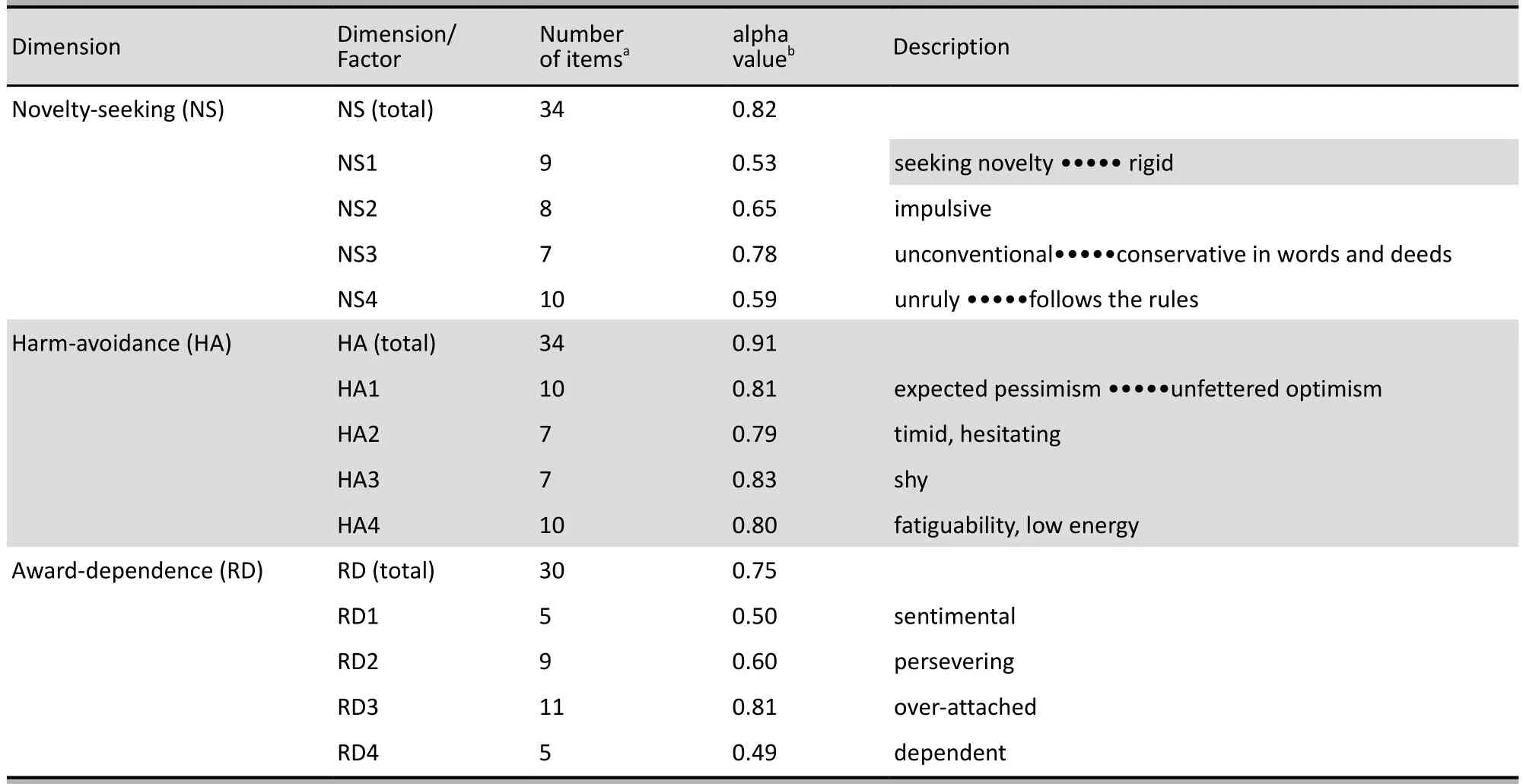
Table 1. Three dimensions and 12 factors in the Tridimensional Personality Questionnaire (TPQ)
3.2 Comparison of TPQ scores between those who do and do not meet criteria for internet addiction
As shown in Table 3, there were significant differences in the personality profile of students with and without internet addiction. The total score for the novelty-seeking and harm-avoidance dimensions are significantly higher in the internet addiction group and the total score for the reward-dependence dimension is significantly lower.
3.3 Correlation analysis between TPQ scores and CIAS dimension scores
As shown in Table 4 the novelty-seeking and harmavoidance dimensions of the TPQ were positively correlated with the total CIAS score and with the CIAS subscale scores. The reward-dependence dimensionof the TPQ is negatively correlated with the total CIAS score but positively correlated with some of the CIAS subscale scores. Given the relatively large sample size most of the correlation coefficients examined were statistically significant but only 2 of the 18 correlation coefficients assessed exceeded 0.30: the correlations between the TPQ harm-avoidance dimension and the overall and the internet addiction tolerance subscale score of the CIAS.

Table 2. Comparison of demographic characteristics of college students in Wenzhou, China with and without internet addiction
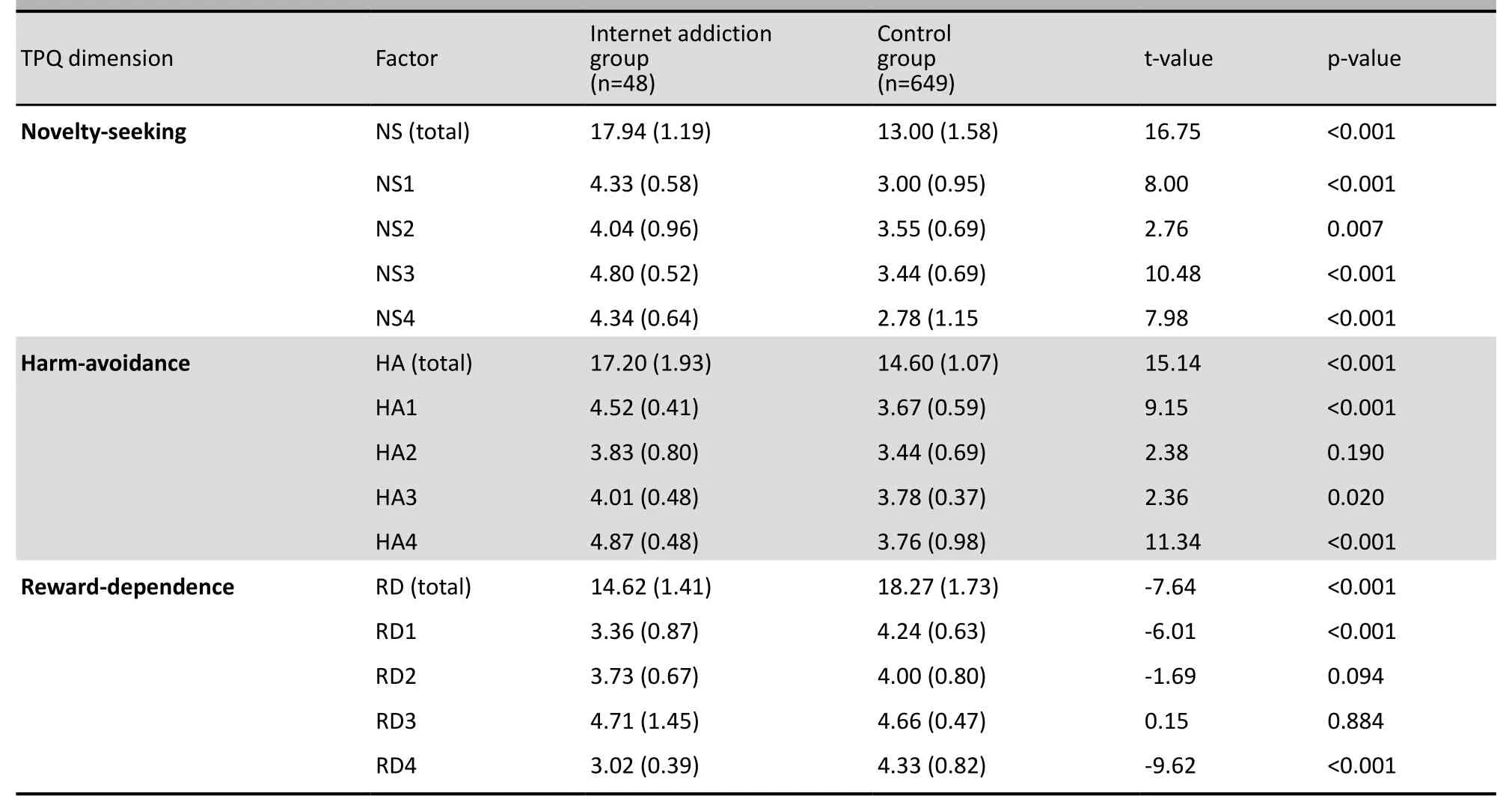
Table 3. Comparison of mean (sd) scores of the Tridimensional Personality Questionnaire (TPQ) between college students with and without internet addiction
Comparison of the correlations of TPQ and CIAS among the 48 persons who met criteria for internet addiction and the 649 who did not meet criteria for addiction found no significant differences between the two groups in the correlation of CIAS subscale scores and the harm-avoidance and reward-dependence TPQ dimensions. But the correlation of the CIAS subscale scores with the TPQ novelty-seeking dimension was significantly stronger among persons with internet addiction than in those without internet addiction for the withdrawal syndromes subscale (r=0.480 v. 0.070, t=2.94, p=0.003), the time management problems subscale (r=0.473 v. 0.126, t=2.51, p=0.012), and the interpersonal and health problems subscale (r=0.520 v. 0.090, t=3.15, p=0.002).
3.4 Factors independently associated with internet use and internet addiction
Linear regression analysis (Table 5) using the total CIAS score as the dependent variable and gender, age, ethnicity (Han v. other), substance use (none v. any), type of school, and the three dimension scores on the TPQ as independent variables found that male gender, younger age, Han ethnicity, and tobacco or alcohol use were significant predictors of the reported severity of internet use. Thus after adjustment for all the factors considered in the model, the type of schooland the subscale scores on the TPQ dimensions were not significantly associated with reported level of inappropriate internet use.

Table 4. Correlation of the dimension scores on the Tridimensional Personality Questionnaire (TPQ) and subscale scores of the Chen Internet Addiction Scale (CIAS) in 697college students from Wenzhou, China
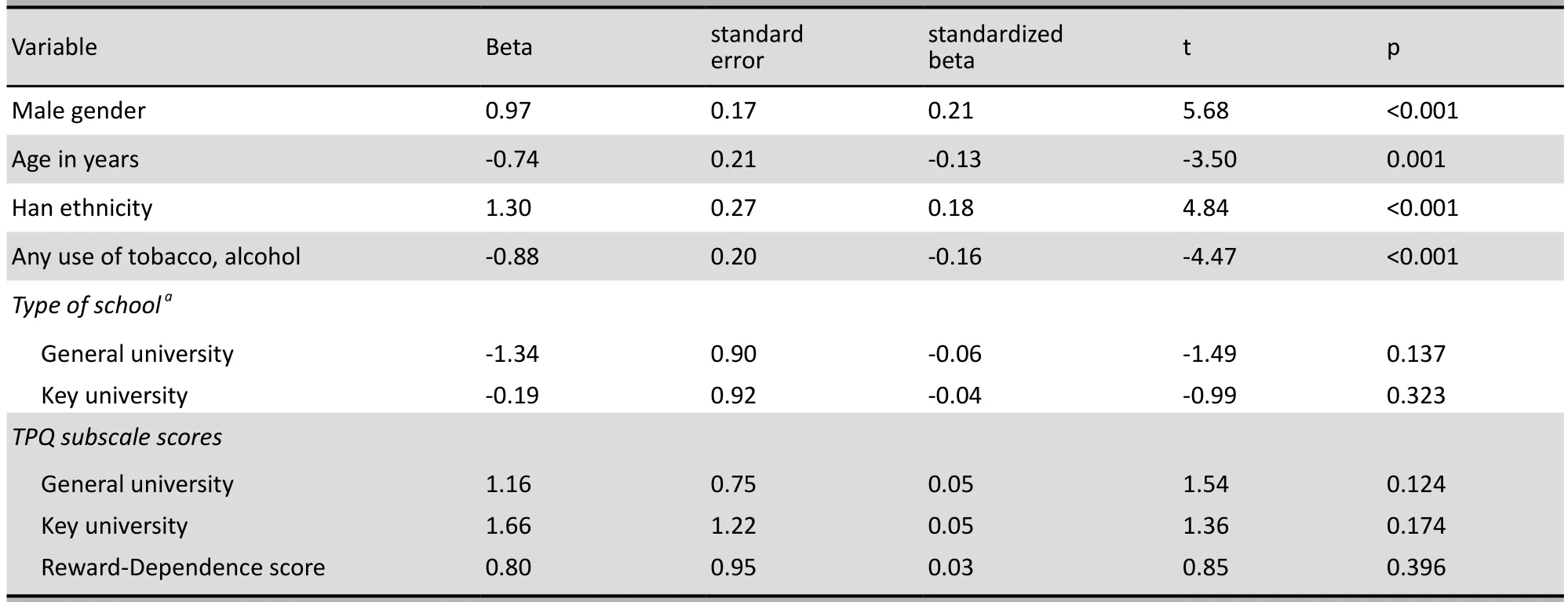
Table 5. Multiple regression results of factors associated with level of internet used in 697 undergraduates in Wenzhou, China
Logistic regression analysis with internet addiction as the dependent variable and the same variables as independent variables came to a similar conclusion (Table 6). The strongest independent predictors of internet addiction (in order of importance) were Han ethnicity, male gender, and any use of tobacco, alcohol or drugs. After adjustment for these factors, type of school, age and subscale score on the TPQ were not significantly associated with the internet addiction.
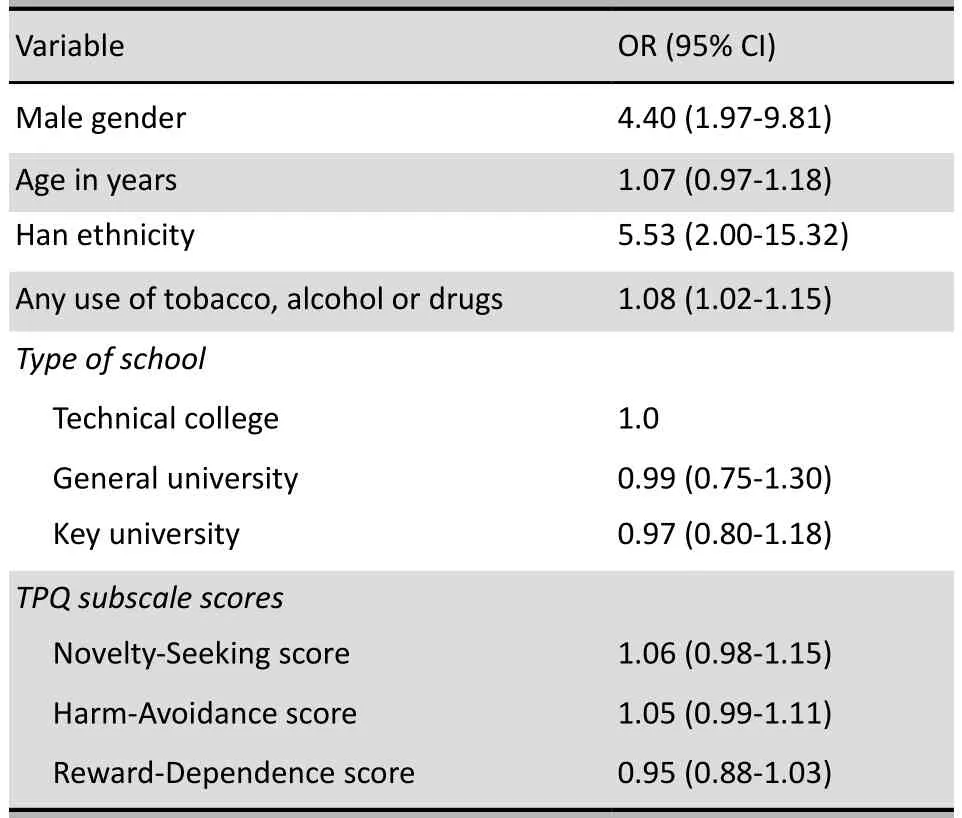
Table 6. Logistic regression results of factors associated with internet addiction in 697 undergraduates in Wenzhou, China
4. Discussion
4.1 Major findings
The present study found a prevalence of internet addiction among college students in Wenzhou of 6.9%, which is similar to that reported in other studies in mainland China.[19]
Based on our univariate analysis, college students with internet addiction in Wenzhou are more likely than those without internet addiction to have the characteristics associated with novelty-seeking (i.e., impulsive, unconventional, unruly) and harm-avoidance (i.e., pessimistic, low energy) and less likely to have the characteristics associated with reward-dependence (i.e., sentimental, dependent). These results are similar to those reported in Taiwan[20]and to those reported for heroin addicts in Sichuan, China.[21]
In the univariate analysis we found a stronger relationship between novelty-seeking personality traits and the severity of inappropriate internet use in the internet addiction group than in the control group. Previous reports[22]suggest that novelty-seeking(NS) reflects the motivational network in the human brain and is associated with the activation of the dopamine system. Individuals with high NS scores are more likely to develop new interests and to be engaged in new activities but they are liable to overlook details and soon become distracted or bored. Internet activities, especially online games, provide a variety of virtual spaces to meet the NS needs of people with high NS scores, so these individuals are more likely to have difficulty in controlling their use of the internet. This is similar to the loss of control in persons with substance abuse problems[22]or addictive gambling problems[23]who also have high NS scores.
The harm-avoidance(HA) dimension of TPQ is supposed to reflect the brain’s punishment (or behavioral inhibition) network, a system that can inhibit high-risk addictive behaviors such as alcoholism.[22]Supporting this contention, high HA scores have been found in individuals with no personal history and no family history of alcohol dependence.[24-26]But the subjects with internet addiction in the current study had high scores on the HA dimension of the TPQ, so—unlike alcohol dependence—high HA did not inhibit this type of dependent behavior. This is consistent with findings in Taiwan[8]and suggests that persons addicted to the internet may be less likely to get addicted to substances. But other studies[27]suggest that internet addiction can predict alcohol dependence. Clearly, more research will be needed to clarify the interrelationships between different types of addictive behavior.
Similar to a parallel study in Taiwan[8]we found that undergraduates with internet addiction had lower scores on the reward-dependence(RD) dimension of the TPQ. Individuals with low RD dimension scores have impaired ability to respond to verbal praise or social reinforcement[27]and they are intolerant of the unpredictable frustrations that occur in real life, so they easily become addicted to the rapid and predictable achievements in internet activities like online games.
The strong relationship of internet addiction to TPQ personality characteristics seen in the univariate analyses was not replicated in the multivariate logistic regression analysis. Similarly, when considering inappropriate internet use as a continuous measure the significant correlation of the level of internet use (i.e., the total CIAS score) with TPQ personality characteristics disappears when linear regression methods are used to adjust for other factors that can affect inappropriate internet use such as gender, ethnicity, substance use, and so forth.
4.2 Limitations
The sample selected is fairly representative of college undergraduates in Wenzhou and the main scales used in the study (TPQ and CIAS) had good internal reliability so the internal and external validity of the results are good. But college undergraduates are a unique sample with a high level of education, a very limited age range, and generally high socioeconomic status so these results cannot be generalized to other subgroups of the population.
This is a cross-sectional study so it can only identify associations between personality and internet use, it cannot identify the causal relationship between these factors. Personality characteristics are generally believed to be stable after the age of 18, but it is certainly possible that the internet addiction behavior reported by these young subjects on the CIAS preceded the personality characteristics they reported in the TPQ; thus it is uncertain whether or not the TPQ can be used to predict subsequent addictive behavior. Longitudinal studies are needed to determine this.
It is clear from the multivariate analysis that the relationship of personality traits to internet use is confounded by demographic factors. Adjustment for these factors in the univariate analysis of the correlationship of CIAS and TPQ scores (Table 4) would provide a more accurate picture of the relationship of the two scales. The multiple linear regression of the total CIAS score with the potential predictor variables (Table 5) may have obscured important relationships between the CIAS subscale scores and these predictors; additional regression analyses using each of the subscale scores as the dependent variable would be needed to identify these relationships.
4.3 Significance
The univariate results of our study are similar to those reported in other studies in Taiwan and mainland China but our multivariate results suggest that many of the univariate results are confounded by demographic and other factors that are significantly different in students with and without internet addiction. Most previous studies on the personality characteristics of students with internet addiction do not control for these potential confounders so the interpretation of their results must be considered suspect. Subsequent studies on the relationship of personality to internet addiction need to adjust for these potential confounding variables.
Conflict of interest
The authors report no conflict of interest related to this paper.
Funding
This project was supported by a Science and Technology Planning Grant (number Y20100197) of the Wenzhou municipal government.
1. Liu CY, Chen YH. An investigation of Internet dependence among college students and its psychological analysis.China Youth Study2009;11:64-67. (in Chinese)
2. Yao JG, Zhang N. An investigation of Internet addiction among college students.Journal of Clinical Psychiatry2006;16(3):170-171. (in Chinese)
3. Lan Y. 6.4% of the college students have internet addiction tendencies.China Youth Daily2001;10:17. (in Chinese)
4. Sarramon C, Verdoux H, Schmitt L, Bourgeois M. Addiction and personality traits: sensation seeking, anhedonia, impulsivity.Encephale1999;25(6):569-575.
5. Yao JG.Correlation research on Internet addiction and personality factors among college students.Nanjing Medical University Master’s thesis, 2006. (in Chinese)
6. Bi Y, Su WL, Sun YF, Cao H, Wang JP. An online study on psychological and behavioral characteristics of college students with Internet addiction.Chinese Journal of Clinical Psychology2005;13(2):170-172. (in Chinese)
7. Zhang CH, Liu GW, Xie Z, Dai J, Chen ZM. An analysis of Internet addiction and personality characteristics as well as psychological health among college students.Chinese Mental Health Journal2006;20(11):761. (in Chinese)
8. Ke ZH, Yan RY, Chen ZZ, Chen SH, Wu K, Yen CF. Tridimensional personality of adolescents with Internet addiction and substance use experience.Can J Psychiatry2006;51(14):887-894.
9. Tian CH,Zheng XH, Zhao HL, Li YZ, Peng H, Yang J. Personality characteristics of alcohol-dependent family memberstridimensional personality questionnaire (TPQ) preliminary test report.Chinese Mental Health Journal1996;4(4):220-222. (in Chinese)
10. Clonginger CR. A systematic method for clinical description and classification of personality variants.A proposal.Arch Ten Psychiatry1987;44(6):573-588.
11. Clonginger CR. Neurogenetic adaptive mechanisms in alcoholism.Science1987,236(4800): 410-416.
12. Clonginger CR. A unified biosocial theory of personality and its role in the development of anxiety states.Psychiatry Dev1986;4(3):167-226.
13. Duan MJ, Yang YC, Li B. Reliability and validity study on Tridimensional Personality Questionnaire.Chinese Mental Health Journal2006;20(9):610-612.
14. Chen WJ, Chen HM, Chen CC, Yu WY, Chen AT. Cloninger’s Tridimensional Personality Questionnaire: psychometric properties and construct validity in Taiwanese adults.Compr Psychiatry2002;43(2):158-166.
15. Stewart ME, Ebmeier KP, Deary IJ. The structure of Cloninger’s Tridimensional Personality Questionnaire in a British sample.Personality and Individual Differences2004;36:1403-1418.
16. Chen SH, Weng LZ, Su YR,WuHM,Yang MF. Chinese Internet Addiction Scale compilation and psychometric study.Chinese Psychology Study2003;45(3):279-294. (in Chinese)
17. Ko CH, Yen JY, Yen CF, Chen CC, Yen CN, Chen SH.Screening for internet addiction: an empirical study on cut-off points for the Chen Internet Addiction Scale. Kaohsiung J Med Sci 2005; 21 (12):545-550. (in Chinese)
18. Chen WW, Gao YB, Peng WB. Efficacy and validity of the CIAS-R among 933 undergraduates in Zhejiang Province. Chin J Sch Health 2009;30(7):613-615. (in Chinese)
19. Wu HR, Zhu KJ. Path analysis on related factors causing Internet addiction disorder in college students. China J Public Health 2004; 20(11): 1363-1364. (in Chinese)
20. Ko CH, Yen JY, Chen CS, Yeh YC, Yen CF. Predictive values of psychiatric symptoms for internet addiction in adolescents. Arch Pediatr Adolesc Med 2009;163(10):937-943.
21. Duan MJ, Fu YS, Bai Q.A comparative study on tridimensional personality characteristics among heroin addicts. Sichuan Mental Health 2007;20(3):135-137. (in Chinese)
22. Cloninger CR, Sigvardsson S, Przybeck TR, Svrakic DM. Personality antecedents of alcoholism in a national area probability sample. Eur Arch Psychiatry Clin Neurosci 1995;245(4-5):239-244.
23. Hermann D, Leménager T, Gelbke J, Welzel H, Skopp G, Mann K. Decision making of heavy cannabis users on the Iowa gambling task: stronger association with THC of hair analysis than with personality traits of the tridimensional personality questionnaire. Eur Addict Res 2009;15(2):94-98.
24. Alexey B, Kampov-Polevoy, Eick C, Boland G, Khalitov E, Crews FT. Sweet liking, novelty seeking, and gender predict alcoholic status. Alcohol ClinExp Res 2004;28(9):1291-1298.
25. Leslie A Lange1, Alexey B, Kampov-Polevoy, Garbutt JC. Sweet liking and high novelty seeking: independent phenotypes associated with alcohol-related problems. Alcohol Alcohol 2010;45(5):431-436.
26. Richard A, Grucza C, Cloninger R, Bucholz KK, Constantino JN, Schuckit MA, et al. Novelty seeking as a moderator of familial risk for alcohol dependence. Alcohol Clin Exp Res 2006;30(7):1176-1183.
27. Masse LC, Tremblay RE. Behavior of boys in kindergarten and the onset of substance use during adolescence. Arch Gen Psychiatry 1997;54(1):62-68.
2011-07-12; accepted: 2012-02-08)
10.3969/j.issn.1002-0829.2012.02.005
1Wenzhou Minkang Hospital, Wenzhou, China2Ruian Fifth People’s Hospital, Wenzhou, China
*Correspondence: jdgjl@yahoo.cn
杂志排行
上海精神医学的其它文章
- Hemispheric dominance during the mental rotation task in patients with schizophrenia
- Symptom severity is more closely associated with social functioning status in inpatients with schizophrenia than cognitive deficits
- Correlation between insight and internalized stigma in patients with schizophrenia
- Latent variable modeling
- · In this issue ·
- Research in China on event-related potentials in patients with schizophrenia
